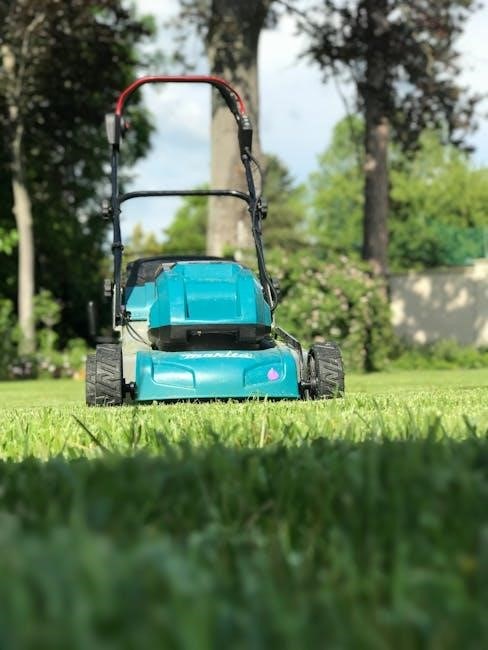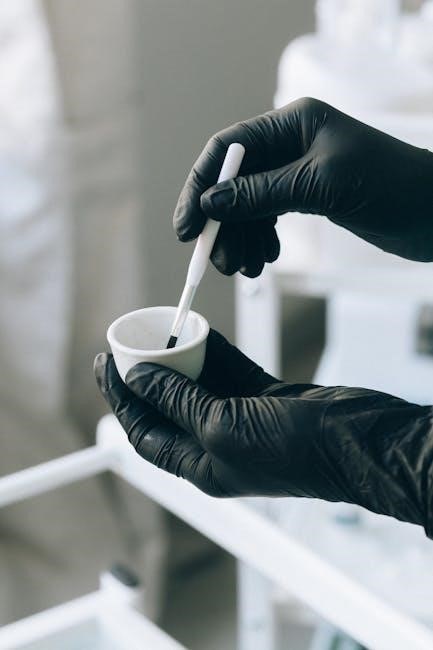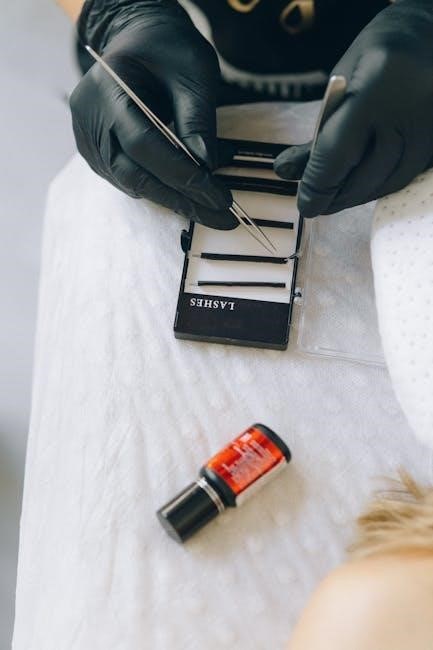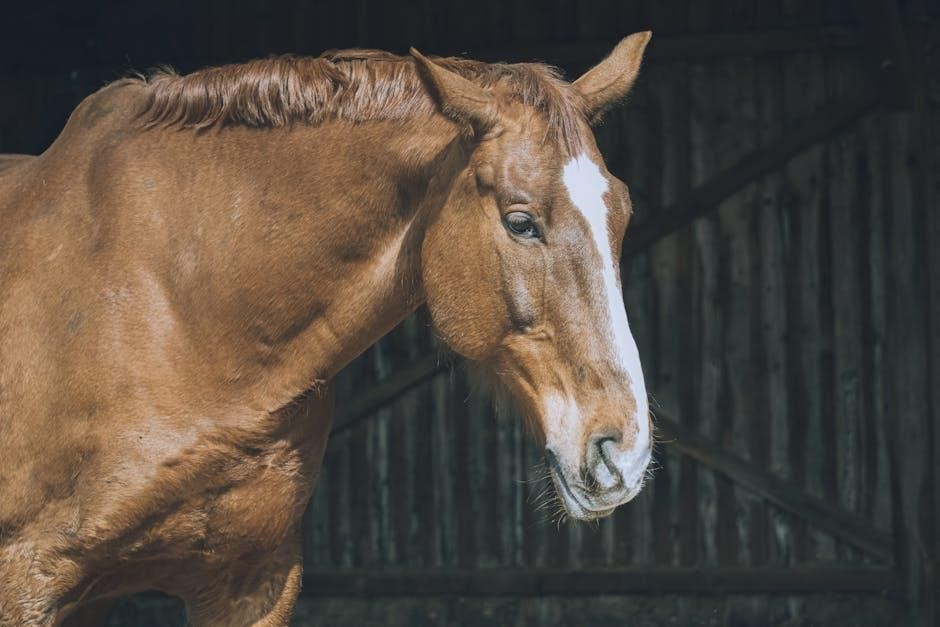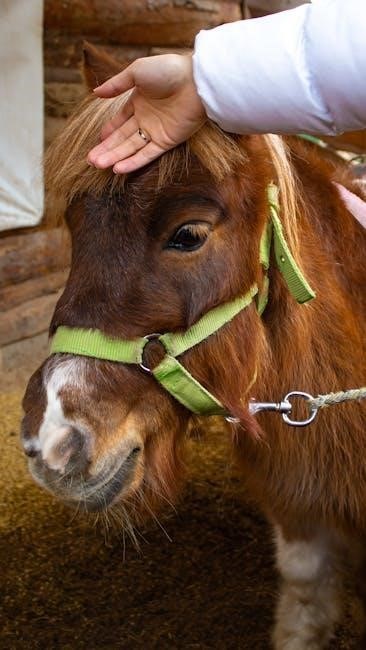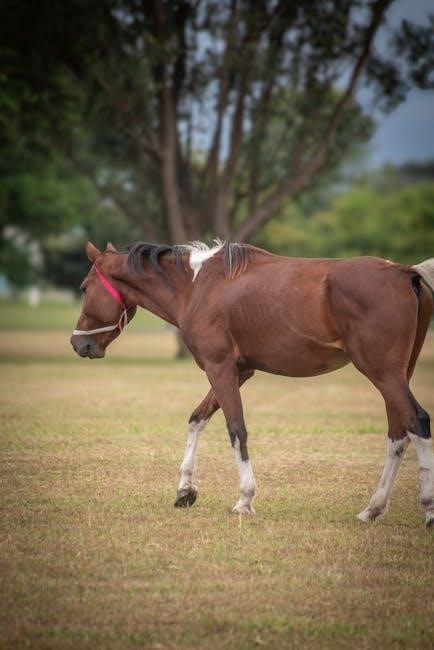The Lag Tramontane T270DCE manual is a comprehensive guide essential for understanding and maintaining your instrument. It covers setup, maintenance, and troubleshooting for optimal performance and sound quality.
Overview of the Lag Tramontane T270DCE Guitar
The Lag Tramontane T270DCE is a dreadnought cutaway electro-acoustic guitar, part of the Tramontane 270 series. It features a solid Sitka spruce top and Mexican snakewood back and sides, offering balanced tone and excellent projection. Designed for both beginners and experienced players, it combines elegant aesthetics with rich, crystalline sound. Priced around €529, it delivers exceptional value, making it a popular choice for its quality and playability.
Importance of the Manual for Optimal Instrument Use
The manual is crucial for maximizing the potential of the Lag Tramontane T270DCE. It provides detailed instructions for setup, preamp installation, and maintenance, ensuring optimal performance. Instructions guide users through stringing, tuning, and battery replacement, while troubleshooting tips address common issues. Regular maintenance and care guidelines help preserve the guitar’s sound quality and extend its lifespan, making the manual an indispensable resource for both novice and experienced players.

Key Features of the Lag Tramontane T270DCE
The T270DCE features a solid Sitka Spruce AA top, Mexican Snakewood back and sides, and a dreadnought cutaway design for enhanced playability and sound projection. It includes a preamp system for amplified performances and a satin finish for a sleek appearance. The guitar comes with a gig bag, ensuring protection and portability, making it a versatile choice for musicians seeking quality and durability.
Design and Construction
The Lag Tramontane T270DCE showcases a dreadnought cutaway body, crafted with a solid Sitka Spruce AA top for clear highs and robust bass. The back and sides are made from Mexican Snakewood, known for its rich, warm tones. The satin finish enhances the natural beauty of the tonewoods, while the cutaway design provides easy access to upper frets. This construction ensures durability and optimal sound projection, making it a versatile choice for various musical styles.
Tonewoods and Acoustic Qualities
The T270DCE features a solid Sitka Spruce AA top, renowned for its clarity and balanced tone, paired with Mexican Snakewood back and sides, adding warmth and richness. This combination delivers a full, resonant sound with crisp highs and deep lows. The tonewoods are meticulously selected to ensure optimal acoustic performance, making the guitar suitable for various playing styles. Proper care and setup, as outlined in the manual, further enhance its tonal qualities and playability.
Electronic Components and Preamp System
The T270DCE is equipped with a high-quality preamp system, powered by two 2032 batteries, ensuring amplified sound with clarity and richness. The preamp features intuitive controls for tone shaping, including EQ adjustments and a phase switch, enhancing live performance and recording capabilities. Proper installation and maintenance, as detailed in the manual, are crucial for optimal electronic performance and longevity of the system.

Setup and Configuration
The T270DCE manual provides detailed guidance for initial setup, ensuring easy playability and optimal sound. Luthiers check and configure each guitar to prevent buzzing and enhance performance.
Unboxing and Initial Setup
Unboxing the T270DCE reveals a meticulously packaged instrument. The manual guides users through initial checks, ensuring all components are intact and properly aligned. It emphasizes inspecting the guitar for any damage and verifying the preamp system’s functionality. Additionally, it provides steps for tuning and string adjustment, ensuring the guitar is ready for play immediately after setup. Proper initial setup is crucial for optimal performance and longevity.
Stringing and Tuning Guidelines
The manual provides clear instructions for stringing and tuning the T270DCE. It recommends using high-quality strings suitable for acoustic-electric guitars and emphasizes proper tension to avoid damage. The preamp system requires two 2032 batteries for operation. Detailed tuning steps ensure accurate pitch and optimal playability. Proper stringing and tuning are essential for maintaining the guitar’s sound quality and overall performance, as outlined in the comprehensive guide.
Preamp Installation and Battery Replacement
The manual details preamp installation and battery replacement for the T270DCE. It specifies using two 2032 batteries to power the preamp system. To install, remove the cover, pull out the battery holder, and ensure correct polarity. Proper installation maintains electronic functionality. Regular battery checks prevent sudden power loss during performances. This section ensures users can handle preamp-related tasks confidently, keeping the guitar operational and sounding its best at all times.

Maintenance and Care
Regular maintenance ensures the T270DCE’s longevity. Clean the guitar with soft cloths, avoid harsh chemicals, and store it in a stable humidity environment. Professional checkups are recommended to maintain playability and sound quality, ensuring your instrument remains in optimal condition over time.
Cleaning and Polishing the Guitar
Regular cleaning prevents dust and dirt from damaging the finish. Use a soft, dry cloth to wipe the body and neck. For polishing, apply a specialized guitar polish with a clean cloth, avoiding harsh chemicals. Gently buff the surface to maintain the instrument’s luster. Avoid excessive polishing, as it may strip the finish. Always test a small area first. Cleaning the fretboard and hardware separately with appropriate products ensures optimal care and longevity of the T270DCE.
Humidity and Storage Recommendations
Maintain a relative humidity of 45-50% to prevent cracking or warping. Store the guitar in a hardcase or gig bag away from direct sunlight and extreme temperatures. Avoid placing it near heating vents or fireplaces. Use a hygrometer to monitor humidity levels and a humidifier if necessary. Proper storage ensures the T270DCE’s wood remains stable, preserving its tone and structural integrity over time.
Regular Checkups by Guitar Luthiers
Regular checkups by a professional guitar luthier are crucial for maintaining the T270DCE’s playability and sound quality. A luthier will inspect the neck alignment, bridge, and electronics, ensuring everything functions optimally. They can address any potential issues before they become major problems, such as adjusting the action or replacing worn components. This routine maintenance ensures the guitar remains in excellent condition and continues to deliver its signature tone and performance.

Troubleshooting Common Issues
The T270DCE manual provides solutions for common issues like electronic malfunctions or string buzz. It guides users through diagnosing and resolving problems to restore optimal performance.
Common Problems and Solutions
The T270DCE manual addresses common issues such as buzzing strings, preamp malfunction, and battery drain. It offers step-by-step solutions, including string height adjustment and battery replacement, ensuring optimal performance. Additionally, it provides guidance on diagnosing electronic issues and recommends professional servicing when needed, helping users maintain their guitar in peak condition. This section is invaluable for troubleshooting and resolving frequent concerns effectively.
Diagnosing Electronic Malfunctions
The T270DCE manual provides detailed guidance for diagnosing electronic issues, such as preamp malfunction or battery drain. It advises checking connections, testing the preamp system, and ensuring proper battery installation. If problems persist, consulting a professional luthier is recommended to resolve complex electronic faults effectively. This section ensures users can identify and address issues promptly, maintaining the guitar’s optimal performance and sound quality.
Warranty and Repair Options
The Lag Tramontane T270DCE manual includes details on warranty coverage, ensuring protection against manufacturing defects. It outlines the warranty period and eligible repairs, such as defective electronics or craftsmanship issues. For repairs, the manual advises consulting authorized Lâg service centers or luthiers. Proper documentation and adherence to maintenance guidelines are essential for warranty claims. This section provides clarity on repair options and ensures users can address issues efficiently while maintaining their guitar’s quality and performance over time.
Accessories and Compatible Gear
The Lag Tramontane T270DCE manual recommends compatible accessories like high-quality cases, tuners, and strings to enhance performance and protection. These gear options ensure optimal sound and longevity.
Recommended Cases and Bags
Protecting your Lag Tramontane T270DCE is essential. The manual suggests using high-quality, form-fitting cases or gig bags designed for dreadnought cutaway guitars. Hardshell cases offer superior protection, while padded gig bags provide convenience for frequent travelers. Look for durable materials, such as sturdy nylon or hardshell construction, with plush interiors to safeguard the instrument. Investing in a reliable case ensures your guitar remains in pristine condition, whether at home or on the go.
Tuners and Effects Pedals
The Lag Tramontane T270DCE is pre-equipped with a high-quality preamp system, but for precise tuning, a dedicated clip-on tuner like the Snark or D’Addario is recommended. For effects pedals, consider reverb, delay, or chorus to enhance your sound without compromising the guitar’s natural tone. Ensure pedals are compatible with acoustic-electric guitars and feature clear EQ controls for optimal tonal adjustment. These accessories complement the T270DCE’s versatility, offering endless creative possibilities for players of all levels.
Strings and Picks
The Lag Tramontane T270DCE is typically equipped with medium-gauge strings, ideal for balanced tone and playability. For optimal sound, use high-quality bronze or phosphor bronze strings. Picks should be medium to heavy gauge to bring out the guitar’s full dynamic range. Avoid overly thick picks to prevent marring the soundboard. The manual recommends experimenting with different string materials and pick styles to enhance your playing experience and tonal expression.

Comparisons with Other Tramontane Models
The T270DCE stands out among Tramontane models with its dreadnought cutaway design, solid Sitka spruce top, and Mexican snakewood back and sides, offering rich, balanced tones and excellent playability.
Tramontane Series Overview
The Tramontane series by Lâg offers a range of acoustic-electric guitars known for their meticulous wood selection and exceptional craftsmanship. Each model, including the T270DCE, features a solid Sitka spruce top, delivering clear and resonant tones. The series caters to various playing styles with dreadnought, slim auditorium, and parlor formats, ensuring versatility and excellent playability. Designed to meet the demands of both professionals and enthusiasts, these guitars combine aesthetic appeal with superior sound quality and durability, making them a popular choice among musicians seeking high-performance instruments at an accessible price point.
Differences Between T270DCE and Other Models
The T270DCE stands out with its dreadnought cutaway design, solid Sitka spruce top, and Mexican snakewood back and sides, offering a balanced tone and projection. Unlike other Tramontane models, it features a preamp system for amplified play, making it ideal for live performances; Its natural finish and versatile electronics set it apart, providing a blend of traditional aesthetics and modern functionality that appeals to both acoustic and electric players seeking a dynamic instrument.

Where to Download the Manual
The Lag Tramontane T270DCE manual is available for download from official sources and marketplaces like Reverb. Ensure authenticity by accessing it through trusted platforms for accurate guidance.
Official Sources for the PDF Manual
The official Lag Tramontane T270DCE manual can be downloaded directly from Lâg’s official website or through authorized distributors. Ensure authenticity by accessing the PDF from trusted sources. Reverb and other verified marketplaces also provide reliable access to the manual, while avoiding counterfeit versions. Always verify the source before downloading to ensure you receive the correct and comprehensive guide for your instrument.
Reverb and Other Marketplaces
Reverb is a trusted marketplace where users can often find the Lag Tramontane T270DCE manual as a free download alongside guitar listings. While browsing, ensure the manual is included free of charge to avoid unnecessary costs; Be cautious of counterfeit sources, as only official or verified sellers provide authentic PDFs. Always verify the source to guarantee you’re downloading the correct and complete guide for your instrument.

Price and Availability
The Lag Tramontane T270DCE is priced around $600, offering excellent value for its quality. It’s readily available in stock at various music retailers and online marketplaces.
Current Pricing and Stock Status
The Lag Tramontane T270DCE is currently priced at $529.00, offering excellent value for its quality and features. It is in stock and available for immediate shipping from various authorized retailers and online marketplaces. This pricing reflects the guitar’s exceptional craftsmanship, tonewoods, and electronics, making it a standout choice in its price range for both intermediate and professional players seeking a reliable instrument.
Special Offers and Discounts
The Lag Tramontane T270DCE is occasionally available with special offers, including seasonal sales and bundle deals. Some retailers provide free shipping or discounted accessories when purchasing the guitar. Additionally, custom setup modifications can sometimes be included at a reduced cost. It’s advisable to check authorized dealers or online marketplaces for current promotions and discounts to maximize value. Stock availability may vary, so act promptly to secure these offers while they last.

User Reviews and Feedback
Users praise the T270DCE for its rich tone and playability, with many noting its exceptional value. Professional reviews highlight its balanced sound and sturdy construction, making it a favorite among players of all levels.
Customer Experiences and Ratings
Customers highly rate the Lag Tramontane T270DCE, praising its rich, balanced tone and excellent playability. Many highlight its value for the price, with positive feedback on its solid construction and aesthetic appeal. The comprehensive manual has been instrumental in helping users maintain and troubleshoot their instrument effectively, contributing to high satisfaction levels and glowing reviews across various platforms.
Professional Reviews and Recommendations
Professional musicians and reviewers praise the Lag Tramontane T270DCE for its rich, balanced tone and exceptional playability. Many highlight its excellent value, comparing it favorably to guitars priced significantly higher. The solid Sitka Spruce top and Mexican Snakewood back and sides are frequently commended for their acoustic qualities. Experts recommend this model for its versatility and reliability, making it a top choice for both studio and live performances.

Advanced Techniques for Using the T270DCE
Optimizing Sound Quality
Experiment with string types and tunings to unlock the T270DCE’s full tonal potential. Adjust the preamp EQ settings for tailored sound in various playing environments and styles.
Maximize the T270DCE’s acoustic potential by experimenting with string types and actions. Adjust the preamp’s EQ settings to enhance bass, mid, and treble frequencies for desired tonal balance. Utilize the guitar’s dreadnought body shape for projection and clarity. Fine-tune playing techniques to exploit the Sitka Spruce top’s responsiveness. Regularly check humidity levels to maintain optimal sound quality and prevent warping. Explore different tunings to unlock unique sonic possibilities, ensuring the guitar performs at its best in every setting.
Custom Setup Options
Personalize your T270DCE with custom setups tailored to your playing style. Adjust the neck relief and action for effortless playability. Explore various string gauges to achieve desired tension and tone. Consider professional luthier modifications for unique configurations. Tailor the preamp settings to suit your sound preferences. Additionally, experiment with pickup upgrades or custom electronics for enhanced versatility. These options ensure your guitar meets your specific needs, enhancing both comfort and performance. Regular maintenance ensures these customizations remain optimal over time.
The Lag Tramontane T270DCE manual is an invaluable resource for maximizing your guitar’s potential. It guides you through setup, maintenance, and troubleshooting, ensuring optimal performance and longevity. By following the manual’s instructions, you can enhance your playing experience and preserve your instrument’s quality. Explore further to unlock your T270DCE’s full capabilities and continue refining your musical journey.
Final Thoughts on the T270DCE Manual
The Lag Tramontane T270DCE manual is an essential companion for guitarists, offering detailed insights into setup, maintenance, and troubleshooting. It ensures optimal performance and longevity of the instrument. By adhering to the guidelines, users can enhance their playing experience and preserve the guitar’s quality. The manual’s comprehensive approach empowers musicians to unlock the full potential of their T270DCE, making it an indispensable resource for both beginners and seasoned players.
Encouragement for Further Exploration
The Lag Tramontane T270DCE manual serves as a gateway to unlocking your guitar’s full potential. Explore advanced techniques, custom setups, and maintenance tips to enhance your playing experience. Dive into the world of tonal experimentation and discover how to tailor your sound. With the manual as your guide, embrace the journey of mastering your instrument and enjoy the rich, resonant tones it has to offer.










